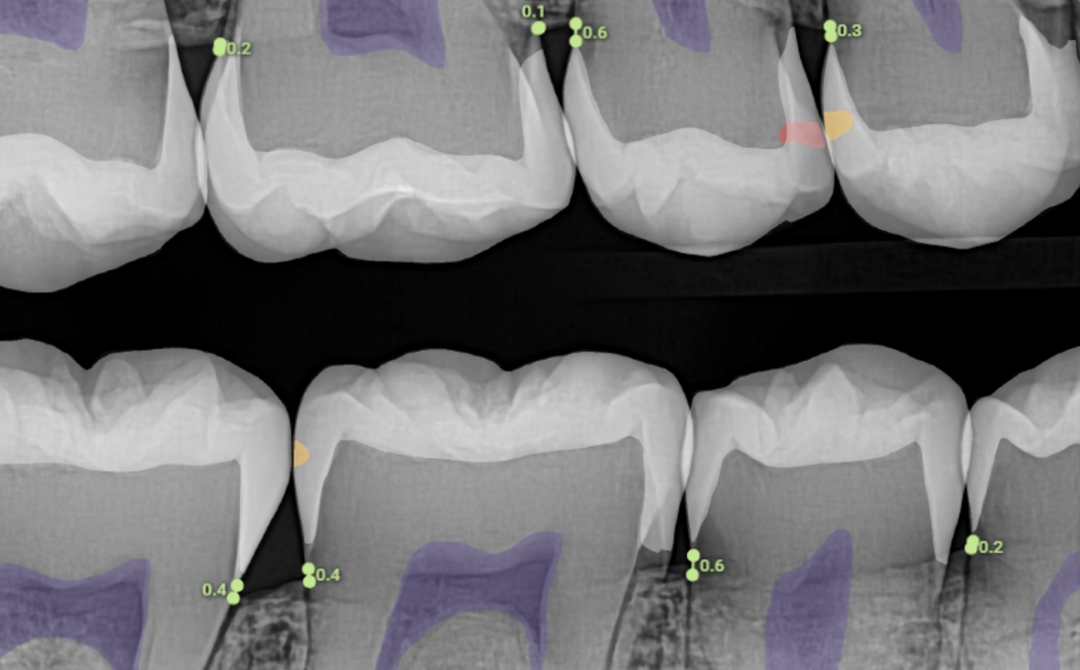

Patient Presentation and examination:
Diagnosis:
Treatment:
Follow-up: At the 6-month follow-up post-treatment, the following observations were made, confirmed also with the AI software: (Figure 2)
Take-away: Interproximal initial carious lesions, being asymptomatic, often escape detection. Routine radiographic examination, aided by AI interpretation, when possible, can help identify these lesions before they become cavitated. These can then be treated non-invasively with Curodont Repair Fluoride Plus, along with patient education on improving oral hygiene and diet, to help remineralize them.